Seventy thousand newspapers and 80 news outlets from 500 satellite channels. That's India's highly competive digital media market with a strong digital first and fastest-growing globe entertainment and media sectors.
I'm in India to present
at their premiere media conference, Talk Journalism, in Jaipur. The last time I was here I shared a lineup with the Guardian's investigative journalis Nick Davies, and Gerald Ryle, executive editor from the International Consortium of Investigative journalists behind the Panama papers. 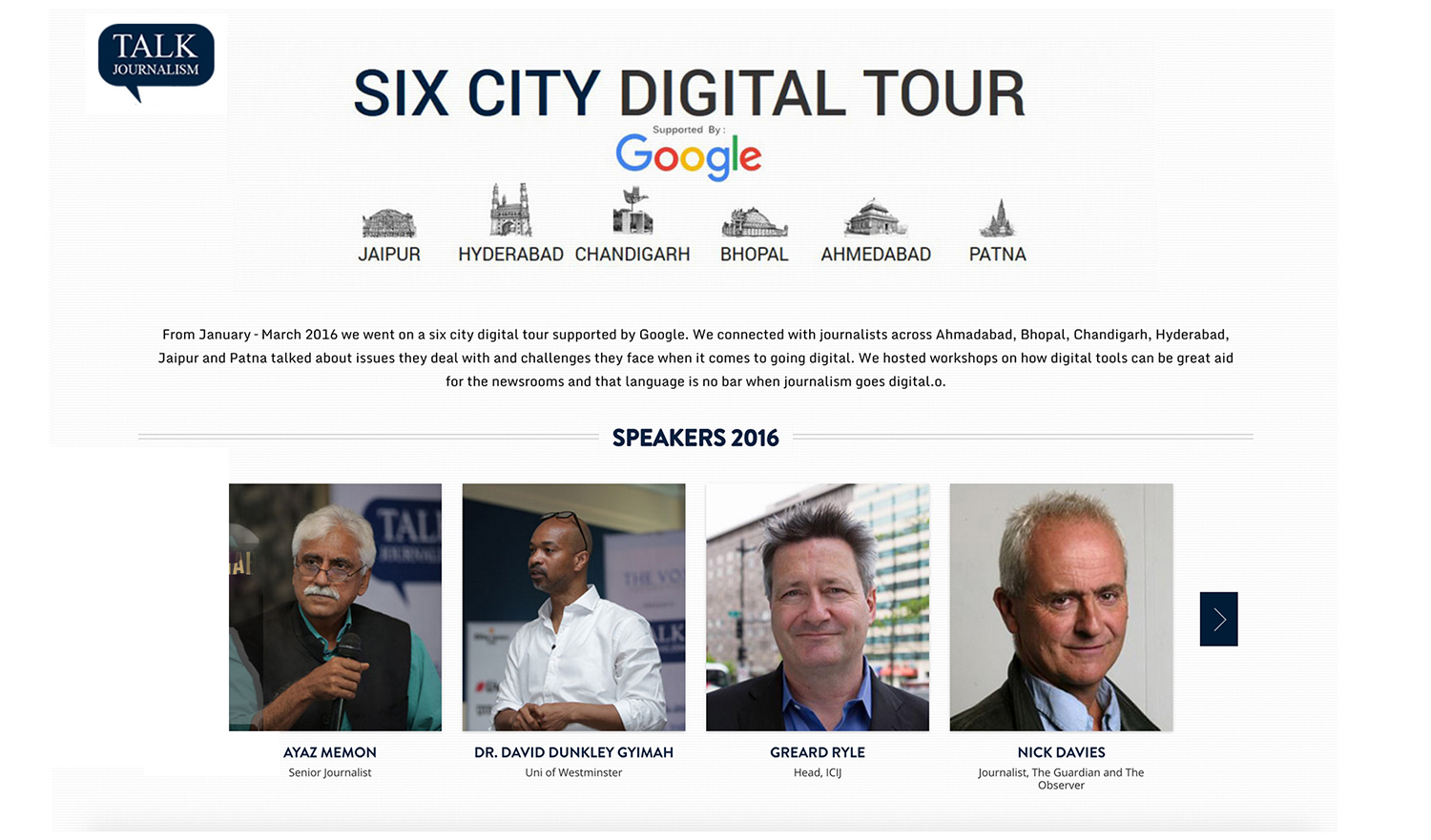
This year my focus was AI, sharing research, and content production in media and journalism productions. My involvement in AI stems from an invite to IBM's headquarters in 2016 and research presented at the Univesity of British Columbia where I was a visiting professor in 2018.

In many ways I told a packed audience, we're back in 2008 with the viral video "Did You KNow?" extoling the creation of jobs that don't yet exist, as well as embracing uncertainty.
Coincindentally, this month marks the anniversary of becoming the first Brit to win the coveted Knight Batten Awards for Innovation in Journalism for creating media that Judges said "foreshadowed the future". Several years later the Guardian would win this coveted prize.
There's evidence that if you're a novice to AI you can boost your performance by 80%. But there's a catch. Without specialist knowledge of the subject area, your results, as impressive as they are, will be generic, plus you'll likely to miss any hallucinations.
That's when AI gives you wrong results, just to please you. However, if you're an expert in your area, collaborating with AI will make your work execeptional, particularly with knowledge of prompt engineering.
Two big things will characterise 2026, Agentic AI, and whilst volume may provide attention and engagement, for impact and distinctiveness a shift to memorability will be imperative.
Here's ways you could use AI from my research and practise-based work.
1. Agentic AI as a co-worker
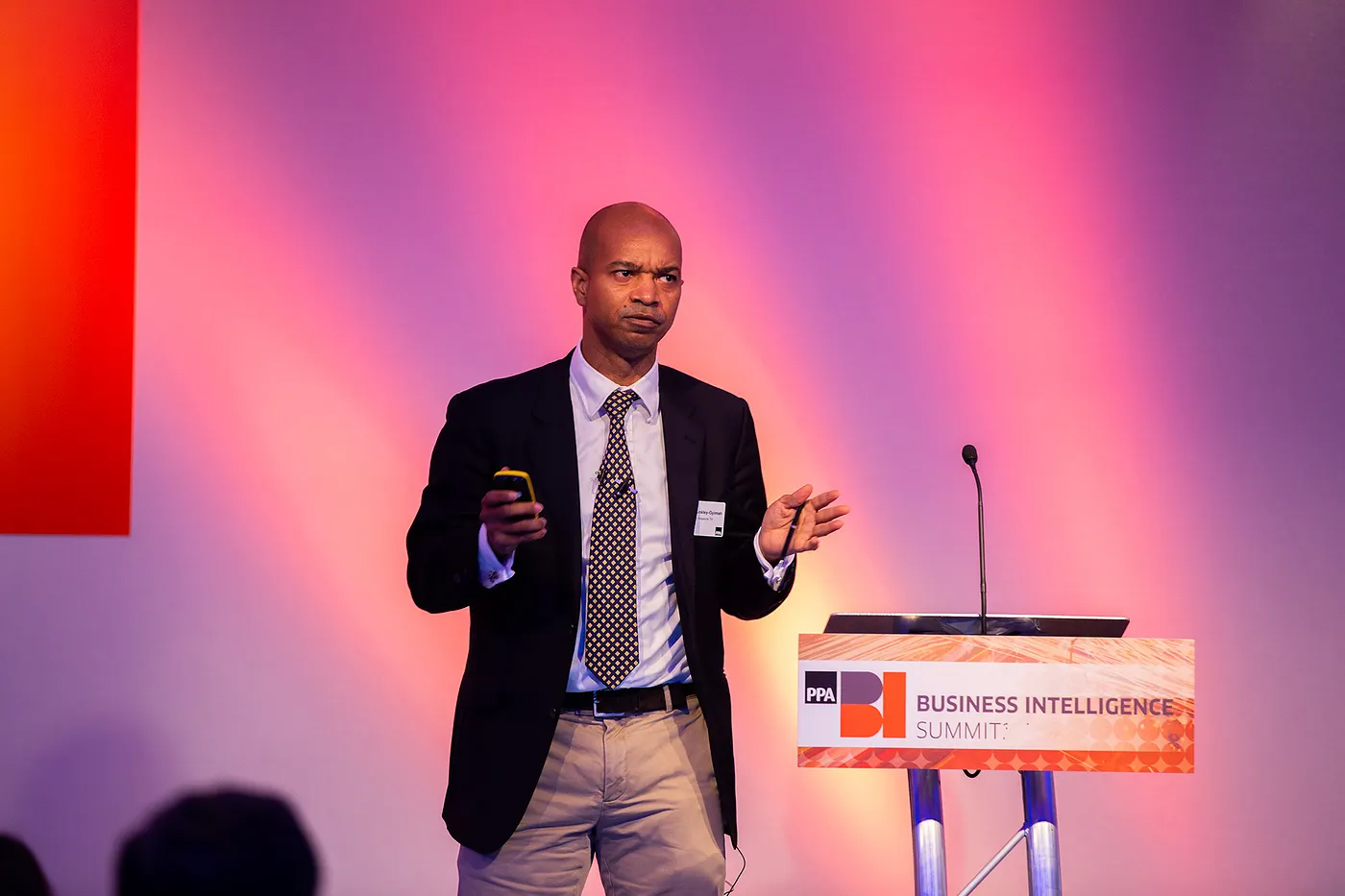 One of the strongest features for Gen AI as a journalist is its use as an agent - a digital assistant who carries out any number of complex tasks.
One of the strongest features for Gen AI as a journalist is its use as an agent - a digital assistant who carries out any number of complex tasks.
In the UK, several media, such as Reach and Newsquest are already building bespoke programes with brand names such as Guten which add efficiency to a journalists' workflow, freeing them up for other tasks. Summarising press releases, and distributing them is just one of many features.
Next year it's easy to see how widespread agentic AIs will be across journalism, particularly assisting freelancers. Currently there's a gap in journalism studies using AI and academia, because of its threat to academic standards.
An aspect of Agentic AI I'm researching stems from my work as a videojournalist and cinema journalism. In 2016, IBM's Watson shocked the film industry by creating a trailer for the sci-fi film Morgan. The trailer differed only by two shots when given to a Hollywood producer.
That's when AI caught my attention and I was invited to IBM's headquarters in Hursley in Hampshire, England. Watson studied a film's pattern and could replicate its form. I used it to analyse a film I made near the Syrian border, WE ARE SYRIA with young Syrians.
Such analysis could support human endeavours in filmmaking by providing pinch points in the film which correlate with viewer's engagement via emotional arcs, cliff hangers and empathy and memorability. Used strategically you can also use it to cut through disinformation and psy-ops.
Think of this as a hybrid of cinema and journalism - a field I researched for my doctorate and found a number of respected journalists blending factual reportage with styles and techniques of cinema.
It builds on the practice of the late great Robert Drew (whom I interviewed) with research into more than 200 respected journalists, experts and practitioners across the world.
A senior BBC figure told me of a meeting with a software company in which they were enquiring about data that might be used to frame journalistic styles. For instance, if you wanted your reports like the BBC's Middle East Editor Jeremy Bowen, you'd prompt the AI to assemble the story as such.
All this puts pressure on journalism practices at present, but also the need for journalism to rise to the challenge of delivering evidence-based stories but with a fresh understanding of the ethical use emotional narratives.
2. Building Websites.
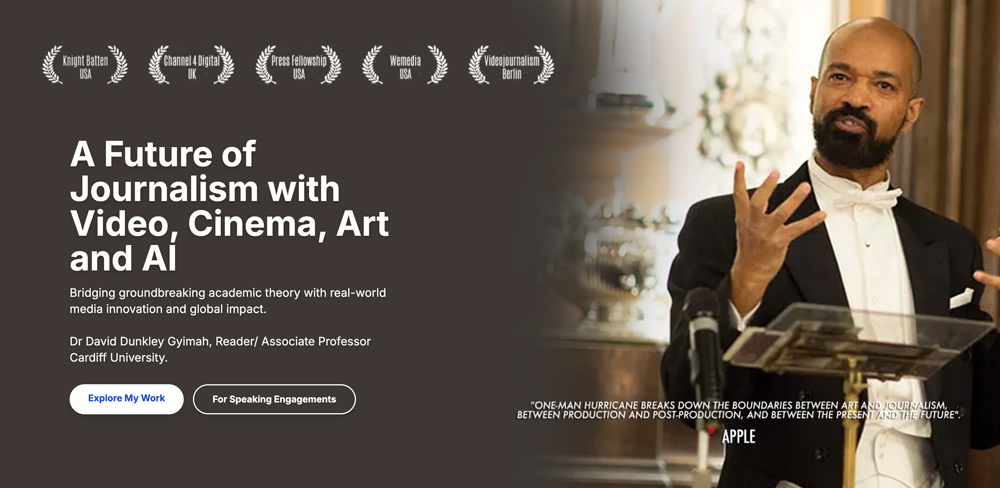 This image above is the front page of my website. It was built with AI. I've been building websites since 2000 and since then taught website coding to generations of Master students and clients.
This image above is the front page of my website. It was built with AI. I've been building websites since 2000 and since then taught website coding to generations of Master students and clients.
I paused building them from scratch in 2016 when off-the-shelf sites were available, then AI came. You can now build a site in seconds with a simple prompt, but that doesn't mean web site knowledge has become redundant.
Here's what I do. I use different GenAI to critique each other's coding and design and useability amongst audiences. Increasingly, next year reviewing platforms for their brand value through algorithms will be a dynamic process.
3. Creating University entrepreneur and digital story study programmes
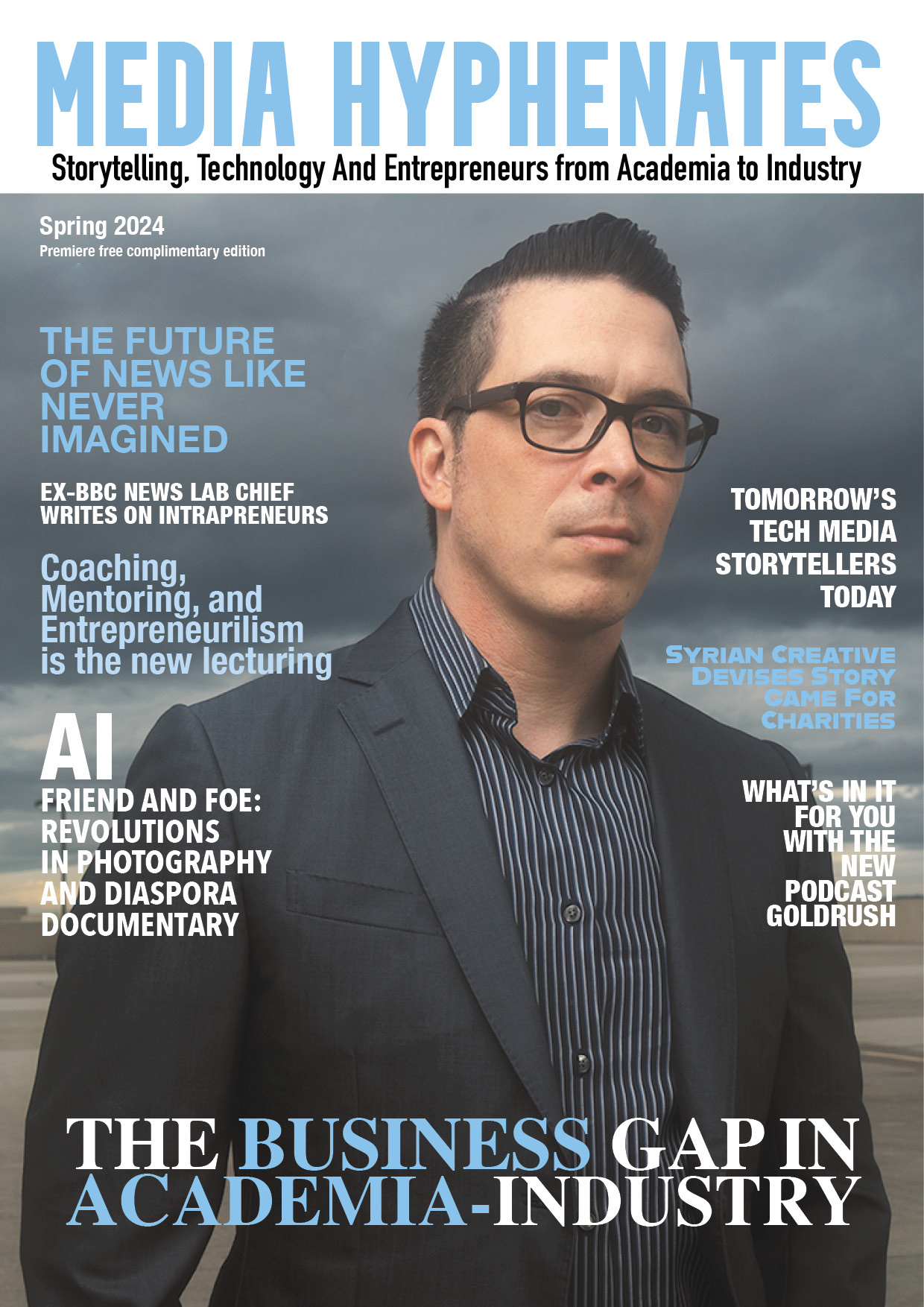 In 2019 I headed up the Emerging Journalism program at Cardif Unversity, working with Tech companies at Tramshed, AI specialists and industry. It drew huge praise from students (see here).
In 2019 I headed up the Emerging Journalism program at Cardif Unversity, working with Tech companies at Tramshed, AI specialists and industry. It drew huge praise from students (see here).
I would publish a journal of Journalism, tech and AI called Mediahyphenates from a grant. Most of the images were created with AI.
Before then in 2016, I led the Digital and Interactve Storytelling LAB at the University of Westminster. We used Nodes to build workflows and fresh approaches to agile start up productions pairing students with industry figures and co-schedule - an early AI writing software - to provided sentiment analysis of one's writing.
Several of our students graduated into different fileds e.g. Banking and gaming - featured in Mediahyphenates.
4. Creating factual films
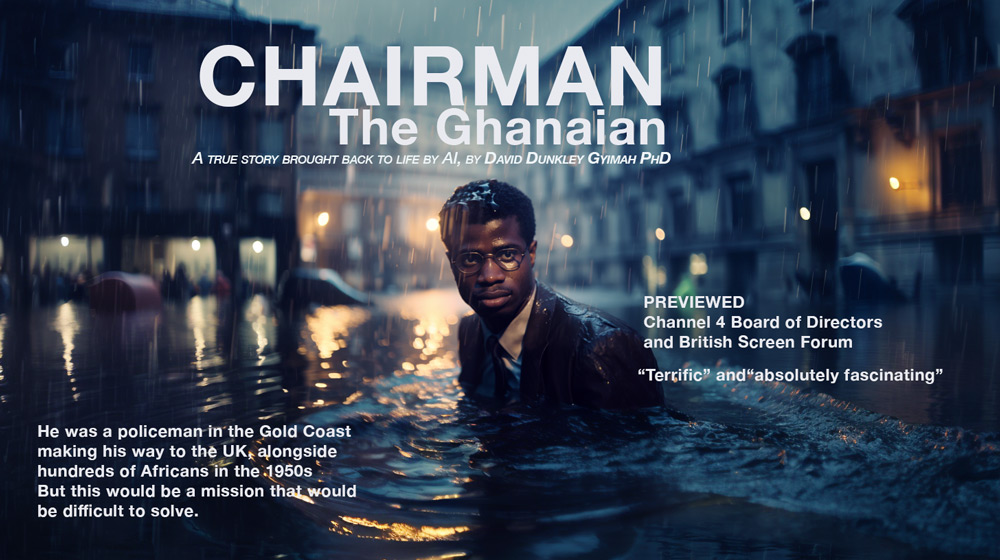 AI was used in the BBC documentary for the prominent writer Salman Rushdie. Chairman: The Ghanaian (2023) was made to show history untold using my father's journey to the UK in 1955. It's a hybrid film and the front slate makes clear.
AI was used in the BBC documentary for the prominent writer Salman Rushdie. Chairman: The Ghanaian (2023) was made to show history untold using my father's journey to the UK in 1955. It's a hybrid film and the front slate makes clear.
Channel Four's Board of Directors, the British Screen Forum, and Ghana's former president John Kufuor invited me to meetings to share and speak about this short .
The use of AI was used to overcome a lack of footage from Africa between the 1930s and 1960s, because of strict laws against Africans filming, such as the Laval Decree.
Using real eye witness testinmonies, letters and acrhive, scenes were reconstructed. There was interests too from the BBC in pitching it as a wide documentary. I built a dedciated site for it here.
5. Creating conference films
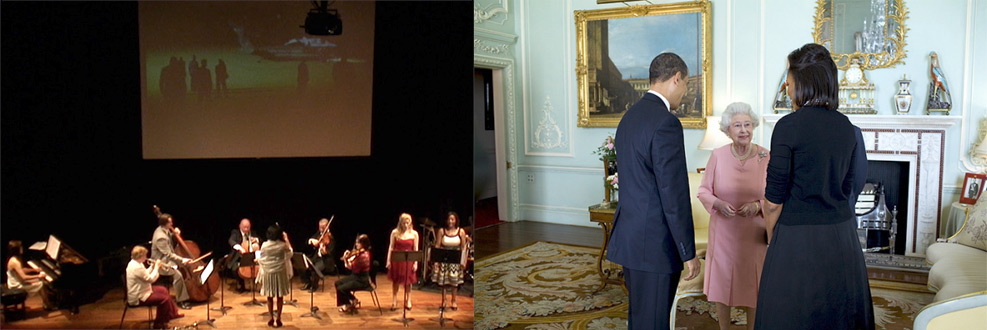 I create impact conference films to show clients' work. These can be backdrops behind performers or promotional. Films, such as "Obama 100 Days" were made for the backdrop for Professor Shirley Thompson OBE conducting her score at the Royal Festival Hall.
I create impact conference films to show clients' work. These can be backdrops behind performers or promotional. Films, such as "Obama 100 Days" were made for the backdrop for Professor Shirley Thompson OBE conducting her score at the Royal Festival Hall.
My work has been shown at the Southbank Centre, The Regent Street Cinema, Natwest Conference Centre and World Press Photography Awards in Amsterdam.
How could AI help? The answer was in resources and cost. Two conference films were created using GEN AI that aired at the Natwest Conference Centre in London hosting the UK Black Business Entrepreneurs Conference, and the first AI and Arts Festival in the US, Arizona.
Empowered was screened as the backdrop to a live choir singing, and would later be shown in cinema in the US.
Nessun Dorma reinterpretated the famous Aria sung by X-Factor finalist Innocent Masaku. It too was shown whilst he was singing live to an audience. Both used midjourney and Runway and some of my own training data.
6. Creating archive news podcasts
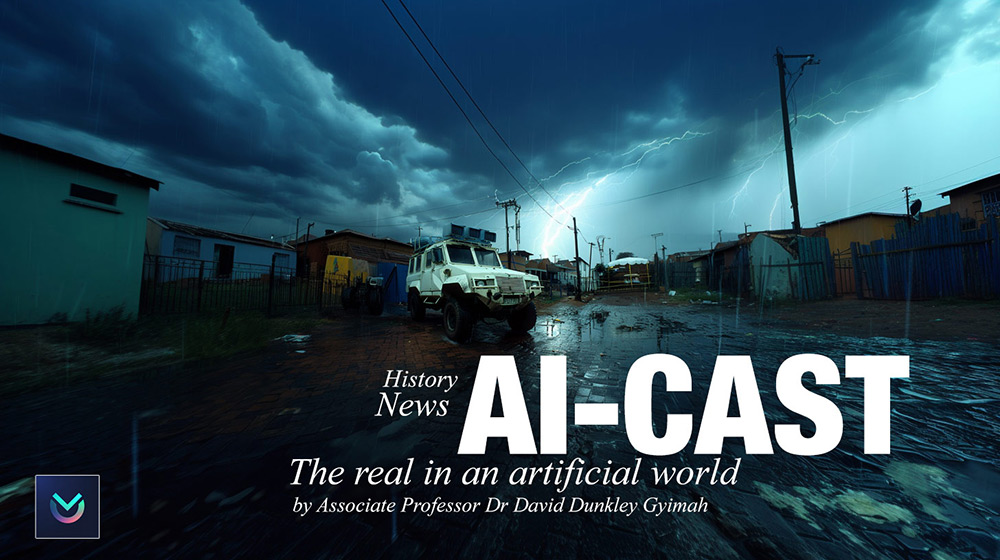 Between 1992-94 I was a freelance correspondent based in Johannesburg reporting on a spectrum of issues as South Africa was set to end Apartheid - legalised racism. I produced many reports broadcast on the BBC World Service, like this on President Nelson Mandela's inauguration.
Between 1992-94 I was a freelance correspondent based in Johannesburg reporting on a spectrum of issues as South Africa was set to end Apartheid - legalised racism. I produced many reports broadcast on the BBC World Service, like this on President Nelson Mandela's inauguration.
These were largely radio reports and provide an insight into South Africa - far different than today. Using AI I created images from memory to accompany some of my dangerous assignments.
AI in news can be controversial. How can you trust what you see? How can you trust the story? I've been working with groups to address this ethical challenge.
Hence I've created a social media app that sits on the video that can display the social connections of the author for verifiication. The idea came from building video-hyperlinking code onto videos in 2005 which was featured in The Economist.
7. RAG (Retrieval Augmnented Generation AI)
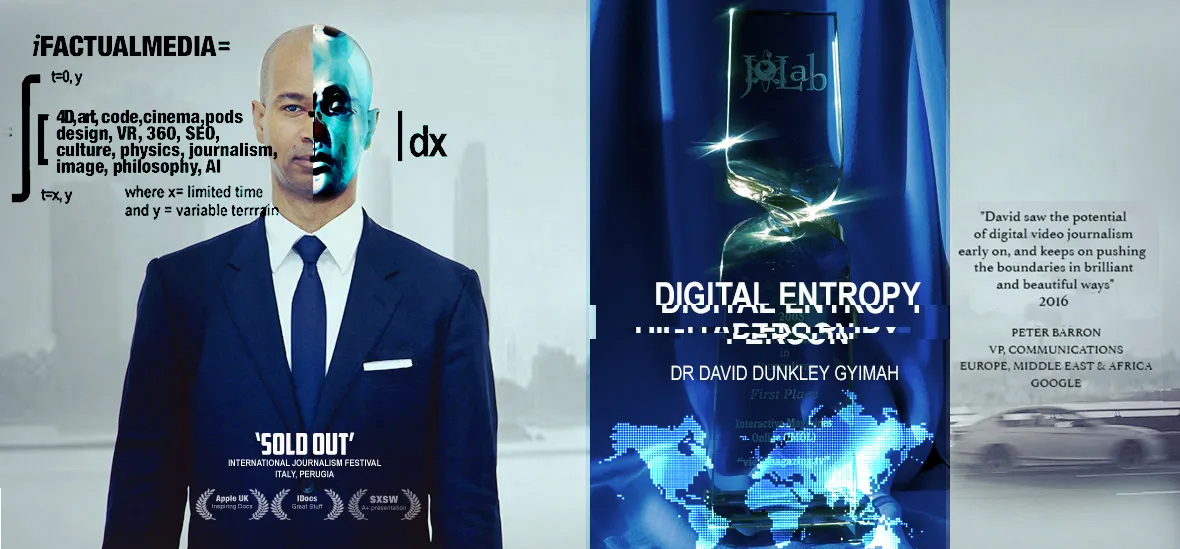 GenAI could boost your work. But even more using your own personal data, you can augment the AI's brain and hence output. That's what RAGS do. It's a fancy name for building your own personalised Gen AI.
GenAI could boost your work. But even more using your own personal data, you can augment the AI's brain and hence output. That's what RAGS do. It's a fancy name for building your own personalised Gen AI.
From 1990-92, I was a freelancer producer and presenter on a programme called Black London, on BBC Greater London Radio. I interviewed many greats, such as Quincy Jones, Spike Lee, Fela Kuti, and covered important social issues.
First, the few I could find were posted some years later as podcasts were coming into their own in 2010 on Apple's podcast service. They received some attention. Then I found a cache of archive tapes.They were deemed historically important by a global archive body FIAT/ IFTA who helped digitise them. My colleague Jose and I have produced a RAG that provides an insight into the 90s, based on our bespoke tapes.
As a former freelance foreign correspondence whose interveiwed many correspondents over the years, this is our next RAG.
I've spoken of many pluse, but there are several downsides as well in emotional manipulation, deep fakes, and disinformation that requires adressing.
More Articles by David
-
Game On, Reimagining “Nessun Dorma”
Exploring AI in operatic storytelling.
-
The Thirty Who Changed Britain's Media
A look back at media pioneers.
-
History Repeats: Why AI Won’t “End” Filmmaking, Just Evolve It
Insights on AI's impact on filmmaking.
-
SXSW London’s launch. Will it match the experience of SXSW Austin?
Reflections on a pioneering career.
